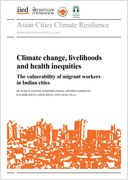
Global assessment report on disaster risk reduction 2009: risk and poverty in a changing climate
This is the first biennial global assessment of disaster risk reduction prepared in the context of the International Strategy for Disaster Reduction. It focuses on the nexus between disaster risk and poverty, in a context of global climate change.

